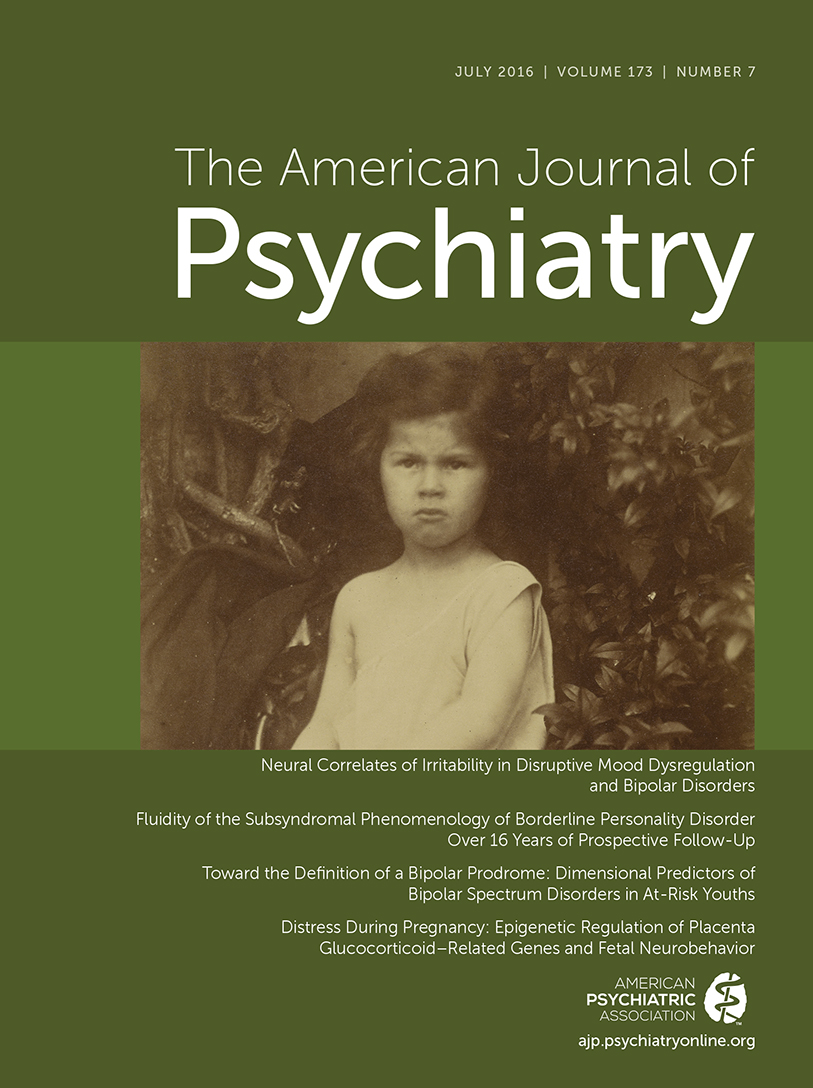In Support of Neuroimaging Biomarkers of Treatment Response in First-Episode Schizophrenia
To the Editor: In the March 2016 issue of the Journal, Gong et al. (1) selectively review the literature on treatment-related brain abnormalities in patients with first-episode schizophrenia. They emphasize the need for studies focused on patients early in their illness, as well as the potential gains from neuroimaging biomarkers that track and predict treatment outcomes.
In support of the growing literature of prospective studies in first-episode schizophrenia reviewed by Gong et al., we recently reported that longitudinal changes in striatal functional connectivity are associated with efficacious treatment by second-generation antipsychotic drugs (2). This work, conducted within a controlled clinical trial (NCT00320671) with pre- and posttreatment functional imaging, revealed that efficacious treatment was associated with increased striatal functional connectivity with frontal and limbic brain regions mentioned by Gong et al., including the anterior cingulate, middle frontal gyrus, orbitofrontal cortex, and hippocampus. In addition, first-episode patients with less improvement in psychosis demonstrated greater striatal connectivity to parietal regions. Another recent study applied longitudinal neuroimaging to examine treatment-based abnormalities within large-scale functional networks in patients not taking medications, including a subset of treatment-naive first-episode patients (3).
Moreover, in an article published in the January 2016 issue of the Journal (4), we reported that baseline functional connectivity of the striatum in first-episode patients with schizophrenia was predictive of the initial response to antipsychotic treatment. We derived an index of striatal connectivity that separated responders from nonresponders in a discovery cohort, and we tested our measure in a more chronic sample of patients undergoing treatment for acute psychosis. The sensitivity and specificity of this measure were 80% and 75%, respectively, in our replication cohort. As highlighted by Gong et al., studies such as ours may be useful for guiding clinicians while taking a step toward precision medicine approaches to the treatment of psychosis.
Our work supports the longitudinal and prognostic framework for studies described by Gong et al., and it stresses the need for biomarker-based treatment trials that trace patient outcomes. Collectively, these results provide momentum toward discoveries that may shed light on the elusive biology underlying the dynamic progression of schizophrenia.
1 : A selective review of cerebral abnormalities in patients with first-episode schizophrenia before and after treatment. Am J Psychiatry 2016; 173:232–243Link, Google Scholar
2 : Antipsychotic treatment and functional connectivity of the striatum in first-episode schizophrenia. JAMA Psychiatry 2015; 72:5–13Crossref, Medline, Google Scholar
3 : Abnormalities in large scale functional networks in unmedicated patients with schizophrenia and effects of risperidone. Neuroimage Clin 2015; 10:146–158Crossref, Medline, Google Scholar
4 : Baseline striatal functional connectivity as a predictor of response to antipsychotic drug treatment. Am J Psychiatry 2016; 173:69–77Link, Google Scholar



